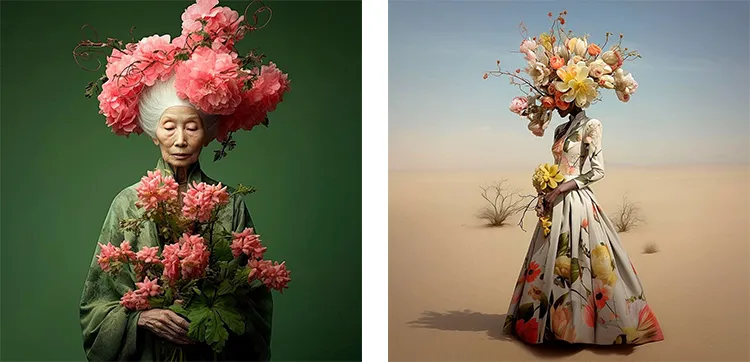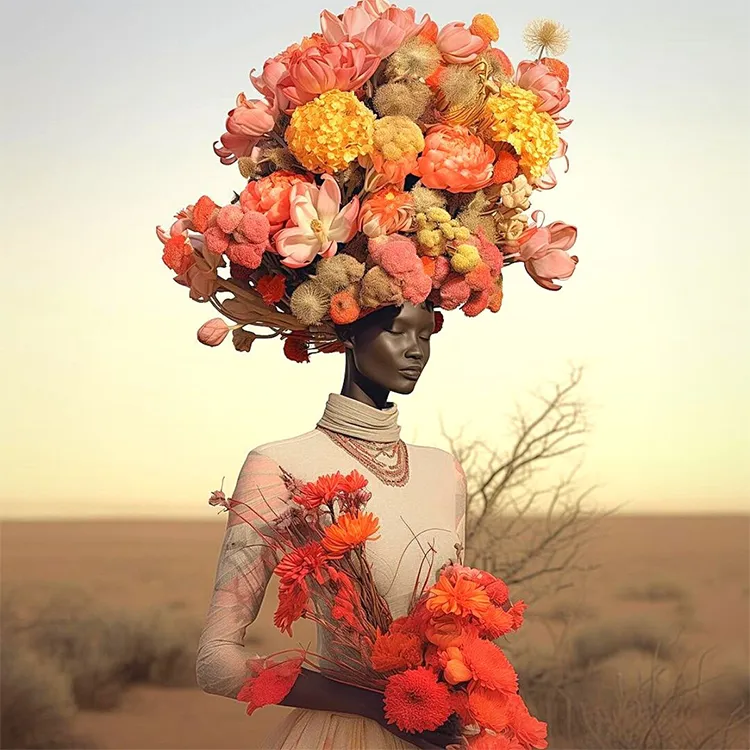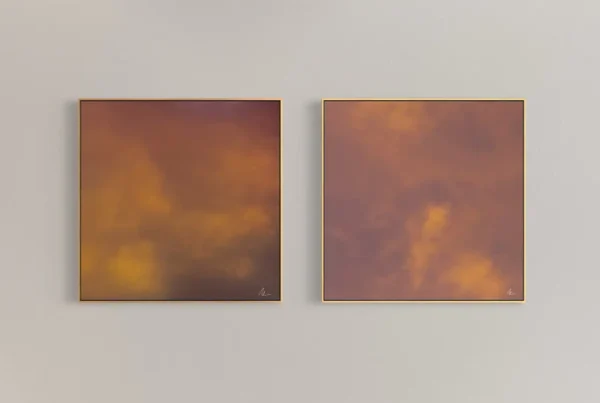Jonas Peterson: The Creative Evolution from Traditional to AI-Generated Art
Jonas Peterson‘s career is a testament to the boundless possibilities within the creative arts. With over 25 years of experience as a writer, filmmaker, creative director, and photographer, Peterson has continuously sought new ways to tell stories and evoke emotion. His journey through various artistic disciplines reflects a restless curiosity and a relentless drive to push creative boundaries. His latest foray into AI-generated art is not a departure from his previous work but rather a natural progression. For Peterson, AI represents a new set of tools—no different from a camera or a paintbrush—that allows him to explore the intricate interplay between fiction and reality. By harnessing the power of AI, Peterson creates art that challenges viewers to question what they see, blurring the lines between the real and the imagined.
The integration of AI into his work is less about a fascination with technology and more about the potential it offers for storytelling. Peterson’s approach to AI is pragmatic; he views it as a means to an end, a way to expand his creative vocabulary. The inspiration to explore AI stemmed not from the technology itself but from its ability to merge the real with the surreal in unprecedented ways. This blending of worlds is at the core of Peterson’s artistic vision, where the boundaries between what is and what could be are continually questioned and redefined. Through AI, Peterson has found a way to amplify his storytelling, creating immersive experiences that resonate deeply with his audience.

Jonas Peterson: A Commentary on Age and Experience through “Youth Is Wasted on the Young”
One of Jonas Peterson’s most impactful works is his collection titled “Youth Is Wasted on the Young,” which has garnered widespread acclaim and sparked significant conversation. This collection serves as a poignant commentary on ageism, a theme that resonates strongly in a society often obsessed with youth. Peterson’s work challenges this fixation by shifting the focus to the elderly, celebrating their pride, confidence, and wisdom. He uses AI to craft images that capture the essence of those who have lived longer and experienced more, portraying them in a light that is both lifelike and surreal. The result is a series of images that not only highlight the beauty of age but also provoke discussions about the value of experience and the often-overlooked narratives of older generations.
In “Youth Is Wasted on the Young,” Peterson sought to create art that honors the depth and richness of life as lived by the elderly. The collection’s success lies not just in its visual impact but in the emotional and intellectual response it evokes. By focusing on the elderly, Peterson challenges viewers to reconsider societal perceptions of aging. He highlights the strength and resilience that come with age, qualities that are often overshadowed by a culture that prioritizes youth. The collection has resonated with a broad audience, touching on universal themes of aging, wisdom, and the stories etched into the faces of those who have seen and experienced more than many will in a lifetime.
The AI technology employed in this collection plays a crucial role in realizing Peterson’s vision. By blending real-life characteristics with surreal elements, the AI-generated images transcend the limitations of traditional photography. This allows Peterson to explore themes of aging in ways that are both visually stunning and deeply thought-provoking. The collection’s success is a testament to the power of AI as a tool for artistic expression, enabling Peterson to create work that is both innovative and impactful.

The Artistic Collaboration between Human Vision and AI Technology
Jonas Peterson’s creative process with AI is akin to the role of a director guiding a complex narrative. Unlike traditional mediums, where the artist has direct control over every detail, working with AI involves a dynamic collaboration between human intuition and machine learning. Peterson begins with a clear vision of the story he wants to tell, the emotions he wishes to evoke, and the overall mood of the piece. He then inputs this vision into the AI, which generates a range of images based on his initial guidance. However, the process is far from straightforward. It involves a meticulous cycle of trial and error, where Peterson refines and curates the AI’s output until it aligns with his artistic intent.
This iterative process underscores the symbiotic relationship between Peterson and the AI. While the AI brings its own set of interpretations and possibilities to the table, it is Peterson’s human touch that ultimately shapes the final work. The AI introduces elements that Peterson might not have originally conceived, adding layers of complexity and surprise to the artwork. Yet, it is Peterson’s creative direction that ensures the final piece is coherent, meaningful, and resonant with his audience. This collaboration highlights the potential of AI to enhance human creativity, offering new avenues for exploration without overshadowing the artist’s original vision.
In his floral artworks, for example, this collaboration between artist and machine is particularly evident. Flowers, with their rich symbolic language, have always fascinated Peterson. By using AI, he can deconstruct and reimagine the natural elements of flowers, creating digital blooms that feel both familiar and otherworldly. The AI processes vast datasets of floral characteristics, allowing Peterson to experiment with combinations of shapes, colors, and textures that defy natural constraints. The result is a collection of floral artworks that invite viewers to engage with their own interpretations, further blurring the lines between reality and imagination.

Jonas Peterson: The Future of AI in the Creative Arts
Jonas Peterson’s embrace of AI in his creative work places him at the forefront of a significant shift in the art world. While many artists remain skeptical of AI’s role in creative fields, Peterson sees it as a tool that enhances rather than diminishes human creativity. He acknowledges the concerns surrounding AI, particularly the fear that it could replace the artist’s hand. However, Peterson argues that AI’s true value lies in its ability to push the boundaries of artistic expression, opening up new possibilities for storytelling and emotional engagement. For him, the core of any artwork still originates from the artist’s vision and intent, with AI serving as a powerful instrument to bring that vision to life.
As AI technology continues to evolve, Peterson envisions a future where more artists will embrace these tools to explore new forms of artistic expression. The key, he believes, is to use AI thoughtfully, ensuring that it serves the story rather than overshadowing the human element. Peterson’s work exemplifies this balance, where the technology enhances his creative output without compromising the authenticity of his artistic voice. His success with AI-generated art demonstrates that technology and creativity can coexist harmoniously, leading to innovative and emotionally resonant work.
The reception of Peterson’s work has been overwhelmingly positive, not only for its visual impact but also for the conversations it sparks about the intersection of technology and art. His ability to connect with audiences on an emotional level, while challenging traditional notions of art and creativity, has positioned him as a leading figure in this new frontier. Peterson hopes that his work will inspire others in the art world to explore the possibilities that AI offers while continuing to honor the irreplaceable value of human creativity. In his view, the dialogue between the organic and the digital is where the future of art lies, and he is excited to be a part of that ongoing conversation.






